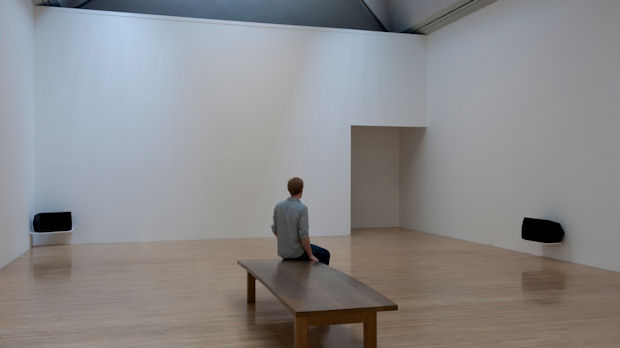Turner Prize: Susan Philipsz wins prestigious art award
Sound artist Susan Philipsz, whose melancholy song loops were first exhibited in secret riverside walkways in Glasgow, wins Britain’s most esteemed and controversial modern art award.
Glasgow-born artist Susan Philipsz was awarded Britain’s most sought-after art prize for her installation, which features her singing three separate versions of the Scottish lament Lowlands Away.
Philipsz recorded three versions of the song, which tells the tale of a man drowned at sea who returns to tell his lover of his death.
The artist uses her own voice to create sound installations that play upon and extend “the poetics of specific often out of the way spaces.”
It is the first time a sound installation has won, or been shortlisted, for the Turner Prize. Philipsz was the firm favourite to win the £25,000 award.
Philipsz told Krishnan Guru-Murthy she was “thrilled” to have won.
Channel 4 News Culture Editor Matthew Cain said the win was a “shot in the arm for sound art”.
“This movement has been under way for a while now and the roots of it can be traced as far back as the start of the twentieth century, with the activities of the Dadists and the Futurists,” Matthew Cain says.
“Now you can even study courses in sound art at a handful of art colleges around the country. So the momentum’s already there.
“The high-profile win for Susan Philipsz might just build this up to the tipping point needed for sound art to really take off.”
Born in Glasgow in 1965, in the late 1980s and early nineties Philipsz studied at Duncan of Jordanstone College of Art, Dundee, and the University of Ulster. She now lives and works in Berlin, Germany.
Her installations explore the way sound and space connect and define one another. She examines the capacity of the human voice to be both an internal and external force, in the case of Lowlands via the secretive yet public walkways under three bridges along the River Clyde in Glasgow.
Artists Dexter Dalwood, Angela de la Cruz and The Otolith Group were also shortlisted for the 2010 Turner Prize. The shortlisted artists receive £5,000 each.
Established in 1984, previous Turner Prize winners include major names in art such as Gilbert and George, Damien Hirst, Antony Gormley and Gillian Wearing. In 1999, artist Tracey Emin was shortlisted for her work My Bed, which featured an unmade bed complete with stained sheets.
Open to artists under the age of 50, the Turner Prize is judged by an independent jury that changes annually. The 2010 award was presented live on Channel 4 News by fashion designer Miuccia Prada.
'It is a surprisingly intimate experience,' writes Matthew Cain
Susan Philipsz's work is possibly the most impactful on this year's list as it represents the first time an artist sculpting in sound has been nominated for the Turner Prize.
And in an age in which the British public is much more ready to accept contemporary art in all its forms, it confronts us with yet another possibility. And this new form may seem instantly familiar to us but in the world of the visual arts, it still isn't the case.
When people hear that a sound artist has made the list they often ask me, 'What's the difference between this and just listening to music?'
Well this is a question that no-one who's experienced the work of Susan Philipsz would ever ask. Lowlands is beautifully melancholic and lingers in the mind long after you've left the gallery.
Read more on Matthew Cain's Culture Blog
